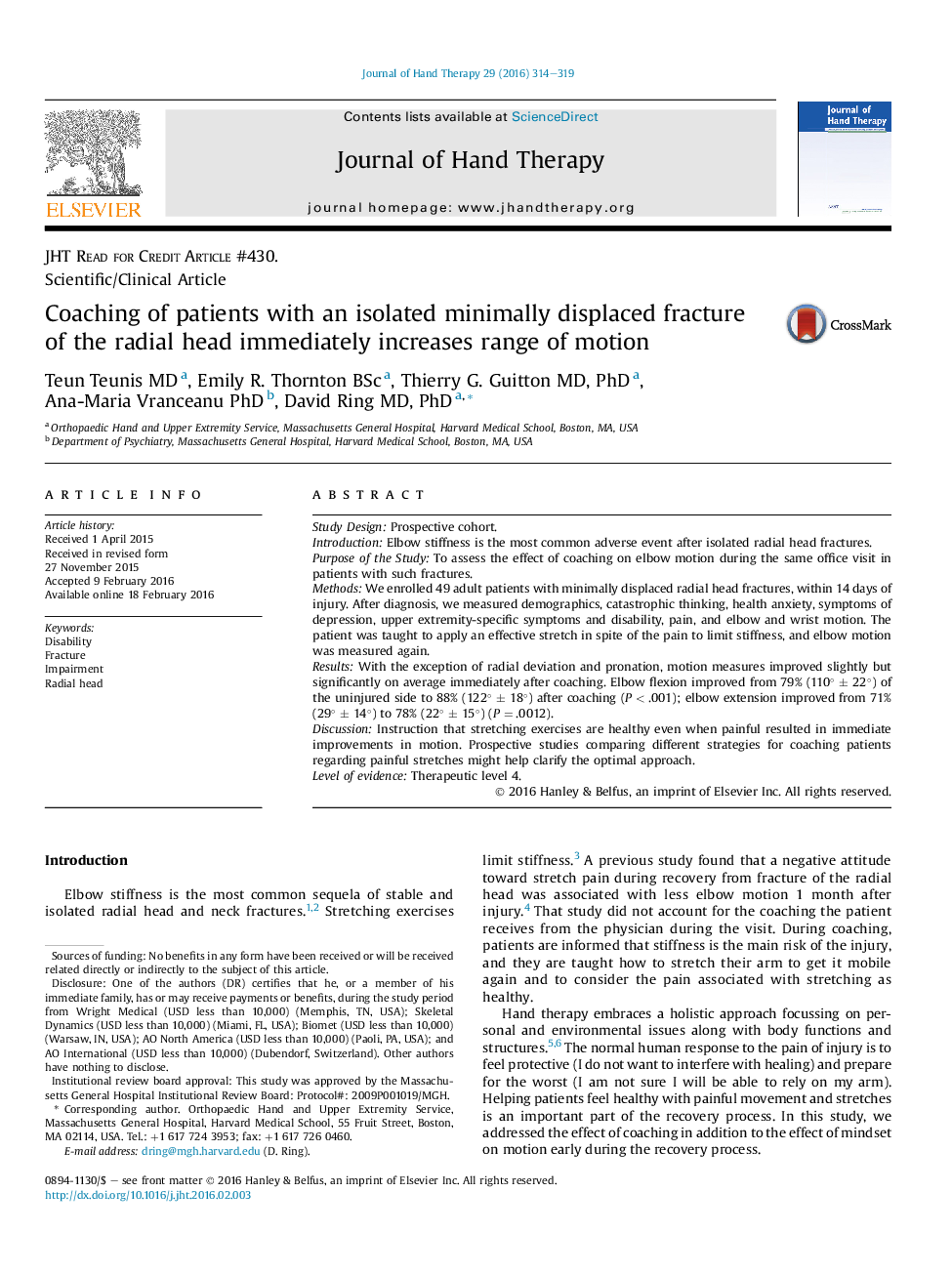| Article ID | Journal | Published Year | Pages | File Type |
|---|---|---|---|---|
| 2694795 | Journal of Hand Therapy | 2016 | 6 Pages |
Study DesignProspective cohort.IntroductionElbow stiffness is the most common adverse event after isolated radial head fractures.Purpose of the StudyTo assess the effect of coaching on elbow motion during the same office visit in patients with such fractures.MethodsWe enrolled 49 adult patients with minimally displaced radial head fractures, within 14 days of injury. After diagnosis, we measured demographics, catastrophic thinking, health anxiety, symptoms of depression, upper extremity-specific symptoms and disability, pain, and elbow and wrist motion. The patient was taught to apply an effective stretch in spite of the pain to limit stiffness, and elbow motion was measured again.ResultsWith the exception of radial deviation and pronation, motion measures improved slightly but significantly on average immediately after coaching. Elbow flexion improved from 79% (110° ± 22°) of the uninjured side to 88% (122° ± 18°) after coaching (P < .001); elbow extension improved from 71% (29° ± 14°) to 78% (22° ± 15°) (P = .0012).DiscussionInstruction that stretching exercises are healthy even when painful resulted in immediate improvements in motion. Prospective studies comparing different strategies for coaching patients regarding painful stretches might help clarify the optimal approach.Level of evidenceTherapeutic level 4.
